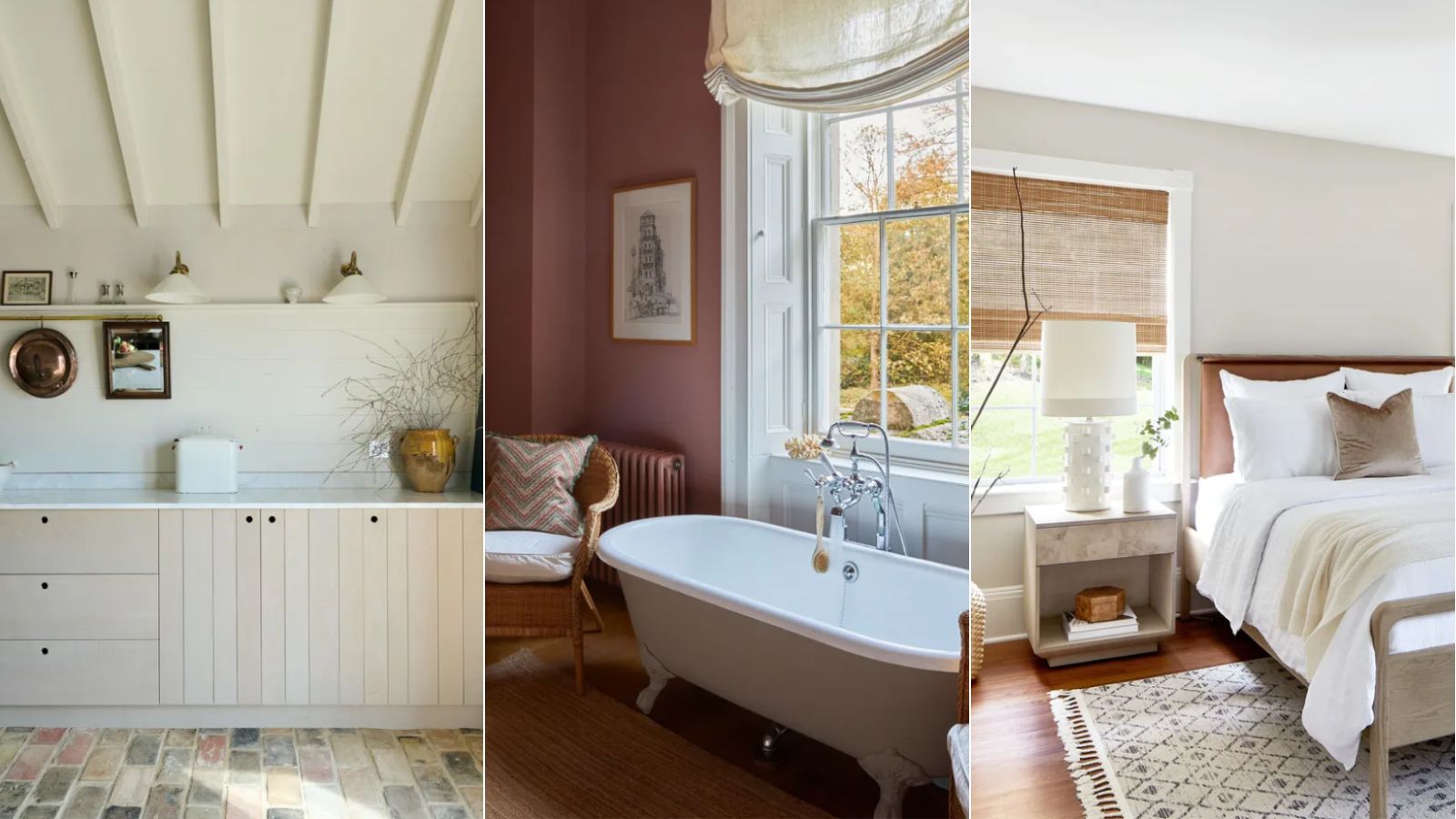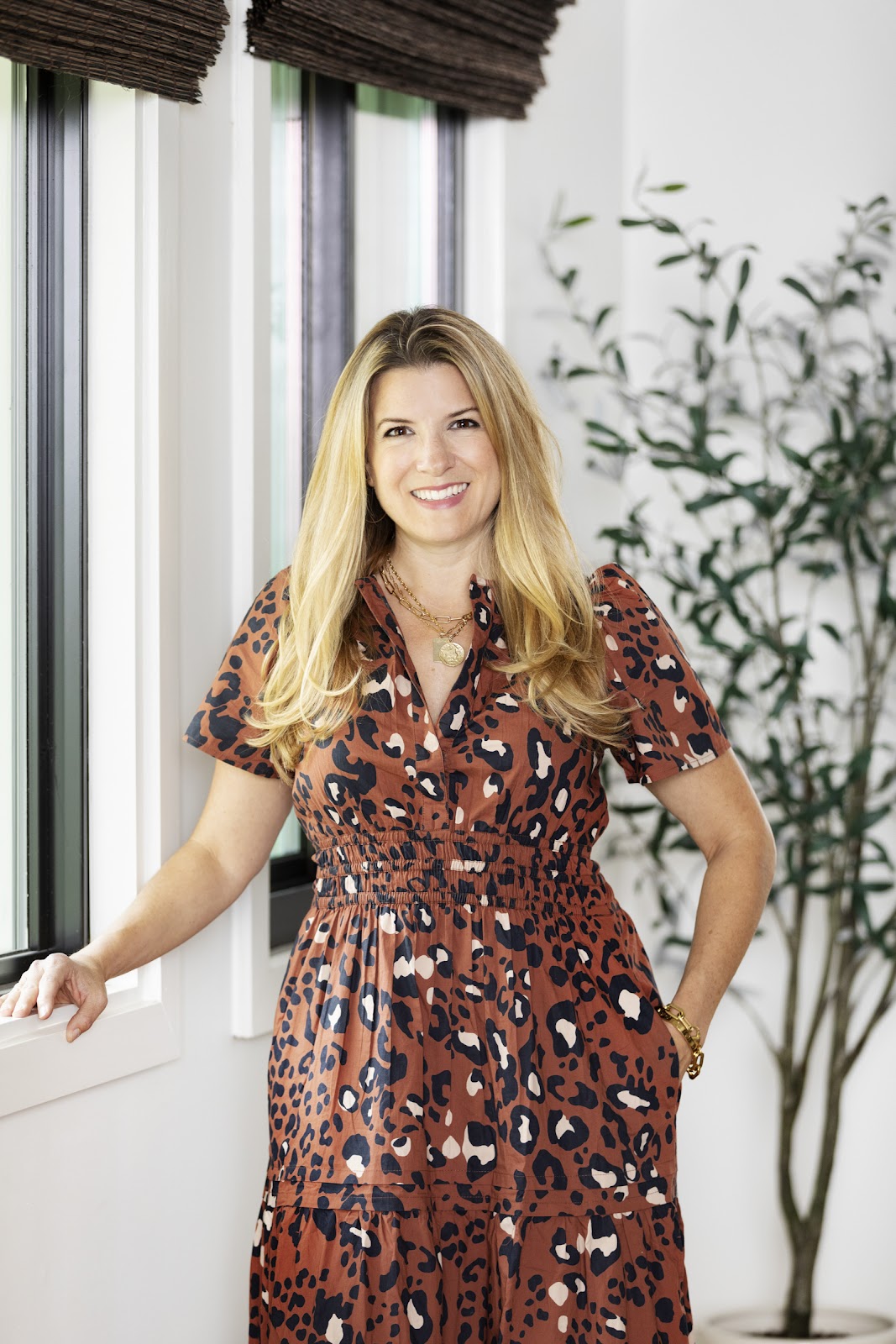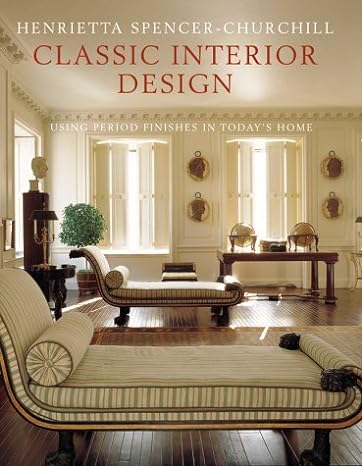What's the difference between British and American interior styles?
According to designers, this is how British and American design differs


When it comes to interior design, it's fair to say there's some level of difference between British and American styles. Of course, this differs from home to home and there is no such thing as a clearly defined British or American interior design style, but there are some noticeable common differences between the two countries.
To get a better understanding of what these differences are, we spoke to interior designers, both British and American. Having spoken to designers who have worked on projects both in America and across the pond, it's clear that the way we design our homes is largely informed by the respective countries' historic influences as well as differences in lifestyle.
'In my experience working in both the United Kingdom and the United States, I've noticed several key distinctions between British and American interior design styles,' says Dara Huang, founder of Dara Maison. 'These differences often stem from varying cultural influences, historical backgrounds, and lifestyle preferences.'
5 key differences between British and American interior design
Below, we've rounded up five different ways that designers say British and American interior design styles differ, from the way we decorate with color trends to the functionality of a space.
1. Size and proportions

The interior style of a space is first and foremost dependent on the size and proportions of the home. This is one fairly key difference between British and American homes, in that American homes are often a lot more spacious than British homes. While this isn't always the case, it is often true that British homes, especially old buildings in large cities can face more restrictions with space, while American homes are often a lot newer and feature open-plan living spaces. This distinction applies to every room of the home, but it's especially clear when we consider the difference between American and British kitchens.
'British homes, especially in older cities like London, tend to have smaller living spaces,' says Dara Huang. 'As a result, there's a focus on maximizing space efficiency and functionality. American homes typically offer larger living spaces, which can lead to more open floor plans and a greater emphasis on creating comfortable, family-friendly environments.'
Melissa Read, Creative Director at London-based Studio Burntwood also notes the common differences between building types, adding: 'More often than not, British interior design reflects the period of the property itself. For us, being based in London, we design many Victorian and Edwardian properties, as well as listed buildings where we need to be extremely sensitive to the architecture of the building and how that translates into the interior.'
Design expertise in your inbox – from inspiring decorating ideas and beautiful celebrity homes to practical gardening advice and shopping round-ups.

Melissa Read attended the KLC School of Design in Chelsea before working at London's best-regarded interior design studios. Now Creative Director of Studio Burntwood, an interior design studio that specializes in luxury residential interior design for private clients and property developers.
2. Architectural details

With any interior project, the original features of a room are fundamental to the design of the rest of the space. When we compare British and American design, it's often these architectural details that make a space either distinctively British or American.
'British and American interior design often showcase distinct characteristics reflective of their cultural heritage and historical influences,' says interior designer Jennifer Davis, founder of Davis Interiors.
Discussing the characteristics of British homes, she explains: 'Architectural elements like intricate moldings and decorative ceilings often take center stage and the interior design typically leans towards a more traditional and formal style, emphasizing elegance, ornate details, and a sense of heritage. On the other hand, American interior design tends to embrace a more eclectic and diverse approach, blending various design elements from different periods and cultures. It's often characterized by a mix of styles, with a big focus on comfort, practicality, and a slightly more casual atmosphere.'

Jennifer fell in love with design at a young age and has been working in the industry for over 25 years. She has developed an eye for detail and a talent for creating timeless designs. Jennifer offers a balance of creativity and forward-thinking with a structured, organized, and detailed mentality. Jennifer is driven by her deep passion for design while curating an exceptional client journey, ensuring pure delight from the very beginning to the end.
Melissa Read also recognizes the strong focus on heritage details in British homes: 'British interior design often showcases 'classic' architectural and interior elements. These classic touches can be seen throughout British interior design, such as molded fireplaces, ornate woodwork, and bespoke ironmongery. There is more emphasis on grand window treatments which accentuates the high ceilings that are often found in a period property.'
3. British design is often more traditional

While this is a general observation and is certainly not true for all homes or interior projects, designers note an overarching theme of British homes favoring traditional decor, whereas American homes can often appear more modern by design.
'One of the core differences between the American and British aesthetic stems from the Brits' love of all things floral and the outdoors,' says Samantha Stathis-Lynch of Samantha Ware Designs. 'The English countryside is dotted with grand country estates and quaint village dwellings, both of which have outstanding gardens. It's no wonder then that English homes hold a smattering of chintz fabrics, landscape paintings, and fresh flowers.'
'Additionally, the cooler and wetter climate of the UK means that cozy and warm spaces are essential, creating a more layered and in many ways traditional look. While such motifs and styles can be seen in the US, the American aesthetic is oftentimes more pared back and in many ways "modern". While we have some old homes, especially in New England, most American dwellings are relatively new when compared to those in England, which can date back centuries.'
4. Color & pattern

When it comes to decorating with pattern and color there are evident contrasts between British and American styles. This generally relates back to the fact that British homes often feel more historic and so colors reflect this, whereas newer American homes may be more likely to reflect modern decor, hence a more contemporary take on pattern and color.
'I find British design to be more whimsical with bold choices either through bold saturated color or a floral pattern of sorts,' says interior designer Peti Lau, part of New York Design Center's Access to Design program. 'Whereas American design tends to be more uniform and symmetrical.'
Dara Huang also observes the difference between the colors used in both British and American designs, explaining: 'British interior design often leans towards more subdued and muted color palettes, reflecting the country's climate and preference for understated elegance. Earthy tones, deep greens, and classic neutrals like taupe and gray are commonly used. American interior design tends to be bolder in terms of color choices. Vibrant hues, contrasting color schemes, and a willingness to experiment with different shades are more prevalent in American homes.'
Dara adds that this difference can also be reflected in the materials used in both American and British homes: 'British design often incorporates rich and tactile textures, such as velvet upholstery, silk curtains, and woolen rugs. Natural materials like wood and stone are prevalent. American design embraces a broader range of materials, including leather, glass, and metals. It's common to see a mix of textures and finishes in American interiors.'
5. American homes often feel more curated

Another common observation amongst interior designers on the differences between British and American design is the way in which homes are styled. Designers explain that American homes can often be more intentionally styled and curated whereas British homes can be more welcoming of an imperfect look.
'I think typically we Brits like interiors that feel as though they have evolved naturally over time, whereas the American look is a little more designed,' says Tiffany Duggan, founder of Studio Duggan. 'I do think there is a lot of beauty in the imperfections – a touch of wear and tear can bring so much warmth and authenticity to a space. English interiors are actually generally quite informal – sofas are soft and capacious and usually adorned with sleeping dogs, ottomans overflowing with books, and a little clutter. American interiors are really well-considered and proportioned. There is definitely room for a little cross-pollination.'
NYC-based interior designer and part of New York Design Center's Access to Design program Sara Bengur also notes this difference, explaining: 'I think the biggest difference between British and American design is that in the UK most interiors have an eclectic feel. They also are not concerned with having everything feel new and flawless – from what I have seen they embrace when something has age and patina. The result is a design that feels lived in and personal. I feel American design is more minimal and streamlined, follows more trends, and generally, people prefer all the elements to be perfect and easy to maintain.'
Designer Lauren Sullivan, founder of US-based Well x Design also observes this distinction between British and American homes: 'I think British design has always embraced honest materials, patina, and character in a way that is enviable. Living finishes and the tiniest of details are part of its charm and appeal. British design has greatly influenced American design in past years – consider flush, inset cabinetry, applied moldings, sash windows, and beautifully tailored upholstery just to name a few.'
It's clear that there are some clear differences to be found between British and American interior design, but as Dara Huang says below, the above observations are only general themes and not necessarily true for every home.
'It's important to note that these are general observations, and both British and American interior design styles are continually evolving and adapting to contemporary trends,' says Dara. 'Additionally, individual preferences and regional variations can lead to a wide spectrum of design styles within each country.'

Emily is a freelance interior design writer based in Scotland. Prior to going freelance in the spring of 2025, Emily was Homes & Gardens’ Paint & Color Editor, covering all things color across interiors and home decor for the Homes & Gardens website. Having gained specific expertise in this area, Emily is well-versed in writing about the latest color trends and is passionate about helping homeowners understand the importance of color psychology in home design. Her own interior design style reflects the simplicity of mid-century design and she loves sourcing vintage furniture finds for her tenement flat.

